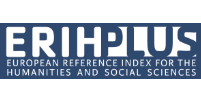Assessment of Hope in School Adolescents
DOI:
https://doi.org/10.36517/revpsiufc.16.2025.e025002Keywords:
hope, adolescent, mental health, protective factorsAbstract
Hope is a positive motivational state aimed at achieving goals, influenced by individual and environmental factors, and contributes to well-being. In adolescence, hope is mentioned as a protective factor in mental health. This study aims to assess the level of hope in school adolescents. The sample included students from the 9th grade of Elementary School and the 1st year of High School in a public school. In the qualitative-quantitative study, the Herth Hope Index (HHI) was applied. The results showed a moderate level of hope in both groups of students. The findings revealed that the highest hope score was in statement 7: "I can remember happy and pleasurable times," indicating the presence of memories of good experiences that sustain hope. The lowest hope score was found in statement 6: "I am afraid of my future," alluding to students' concerns about their personal and professional future. This finding is consistent with the literature and the typical concerns of the adolescent age group. The study reiterates the importance of promoting dialogue with adolescents about current challenges and life perspectives as a mental health prevention measure.
Downloads
References
Ahrnberg, H., Appelqvist-Schmidlechner, K., Mustonen, P., Fröjd, S., & Aktan-Collan, K. (2021). Determinants of Positive Mental Health in Adolescents–A Cross-Sectional Study on Relationships between Positive Mental Health, Self-Esteem, Character Strengths and Social Inclusion. International Journal of Mental Health Promotion, 23(3), 361-374. https://doi.org/10.32604/IJMHP.2021.016408
Aiello-Vaisberg, T. M. J. (1999). Encontro com a loucura: transicionalidade e ensino de psicopatologia. (Tese de Livre Docência). Instituto de Psicologia, Universidade de São Paulo. Recuperado de http://www.teses.usp.br/teses/disponiveis/livredocencia/47/tde- 24022006-090139/pt-br.php
Beattie, T. S., Prakash, R., Mazzuca, A., Kelly, L., Javalkar, P., Raghavendraet, T. … Watts, C. (2019). Prevalence and correlates of psychological distress among 13–14 year old adolescent girls in North Karnataka, South India: a cross-sectional study. BMC Public Health, 19(48), 1-12. https://doi.org/10.1186/s12889-018-6355-z
Carmona-Halty, M., Schaufeli, W. B, Llorens S., & Salanova, M. (2019). Satisfaction of Basic Psychological Needs Leads to Better Academic Performance via Increased Psychological Capital: A Three-Wave Longitudinal Study Among High School Students. Front. Psychol, 10, 1-5. https://doi.org/10.3389/fpsyg.2019.02113
Creswell, J. W. (2007). Projeto de Pesquisa: métodos qualitativo, quantitativo e misto. 2 ed. Porto Alegre: Artmed.
Domingues, A. C. (2021). A promoção da esperança no jovem adulto com um primeiro surto psicótico. Dissertação de Mestrado, Especialização em Enfermagem de Saúde Mental e Psiquiátrica, Escola Superior de Enfermagem de Lisboa. 156 páginas. Recuperado de https://comum.rcaap.pt/handle/10400.26/43746
Finch, J., Waters, A. M., & Farrell, L. J. (2023). Adolescent Anxiety, Depression and Flourishing before and During COVID-19 and the Predictive Role of Baseline Psychological Capital (PsyCap) on Student Mental Health and Subjective Wellbeing During the Pandemic. Child Psychiatry Hum Dev. https://doi.org/10.1007/s10578-023-01568-z
Fraser, A. M., Bryce, C. I., Alexander, B. L., & Fabes, R. A. (2021). Hope levels across adolescence and the transition to high school: Associations with school stress and achievement. Journal of Adolescence, 91, 48-58. https://doi.org/10.1016/j.adolescence.2021.07.004
Guan, J., Liu, B., Ma, W., & Liu, C. (2023). The relationship between negative parenting styles and suicidal ideation among Chinese junior middle school students: The roles of negative emotions and hope. Psychology in the Schools, 1-19. https://doi.org/10.1002/pits.23081
Hu, Y., & Jiang, X. (2022). Hope as an engine mediating the relation between parental attachment and social problem solving skills in adolescents. School Psychology International, 43(3), 237-252. https://doi.org/10.1177/01430343221091991
Jiang, Y., Ren, Y., Zhu, J., & You, J. (2022). Gratitude and hope relate to adolescent nonsuicidal self-injury: Mediation through self-compassion and family and school experiences. Current Psychology, 41, 935-942. https://doi.org/10.1007/s12144-020-00624-4
Kashiwabara, T.; Fujiwara, T.; Doi, S., & Yamaoka, Y. (2022). Association between Hope for the Future and Academic Performance in Adolescents: Results from the K-CHILD Study. International Journal of Environmental Research and Public Health, 19(19), 1-12. https://doi.org/10.3390/ijerph191911890
Khurana, S., Wei, M. A., Karlovich, A. R., & Evans, S. C. (2023). Irritability and Suicidality in Clinically Referred Youth: Clarifying the Link by Examining the Roles of Age and Hope. J Psychopathol Behav Assess, 45, 640-649. https://doi.org/10.1007/s10862-023-10049-5
Kirby, K., Sweeney, S., Armour, C., Goetzke, K., Dunne, M., Davidson, M., & Belfer, M. (2022). Developing Hopeful Minds: Can Teaching Hope Improve Well-being and Protective Factors in Children?, Child Care in Practice, 28(4), 504-521, https://doi.org/10.1080/13575279.2021.1924121
Kogler, R., Vogl, S., & Astleithner, F. (2022). Plans, hopes, dreams and evolving agency: case histories of young people navigating transitions. Journal of Youth Studies, 1-14. https://doi.org/10.1080/13676261.2022.2156778
Ngwenya, N., Barnett, T., Groenewald, C., & Seeley, J. (2021). Complex trauma and its relation to hope and hopelessness among young people in KwaZulu-Natal, South Africa, Vulnerable Children and Youth Studies, 16(2), 166-177. https://doi.org/10.1080/17450128.2020.1865593
Pacico, J. C., Zanon, C., Bastianello, M. R., & Hutz, C. S. (2011). Adaptação e validação do The Hope Index para adolescentes brasileiros. Psicologia: Reflexão e Crítica, 24(4), 666-670. https://doi.org/10.1590/S0102-79722011000400006
Paludo, S. S., Mazzoleni, M., & Silva, A. P. C. (2018). Expressão de esperança em adolescentes em situação de acolhimento institucional. Revista da SPAGESP, 19(1), 76-89. Recuperado de http://pepsic.bvsalud.org/scielo.php?script=sci_arttext&pid=S1677-29702018000100007&lng=pt&tlng=pt
Ricker, B. T., Cooley, J. L., Sanchez, C. R., Gunder, E. M., Dooley, J. A., Chilton, M., & Ritschel, L. A. (2022). Prospective Associations Between Peer Victimization and Internalizing Symptoms in Adolescence: The Protective Role of Hope. Journal of Psychopathology and Behavioral Assessment, 44, 649-662. https://doi.org/10.1007/s10862-022-09966-8
Sartore, A. C., & Grossi, S. A. A. (2008). Escala de Esperança de Herth: instrumento adaptado e validado para a língua portuguesa. Revista Da Escola De Enfermagem Da USP, 42(2), 227-232. https://doi.org/10.1590/S0080-62342008000200003
Sautier, L. P., Sarkar, S., Petersen, M., Mehnert, A., & Escherich, G. (2015). Psychische Belastungen von Kindern und Jugendlichen nach einer Leukämie oder Lymphomerkrankung. Praxis Der Kinderpsychologie Und Kinderpsychiatrie, 64(4), 273-289. https://doi.org/10.13109/prkk.2015.64.4.273
Somers, C. L., Gill-Scalcucci, S., Flett, G. L., & Nepon, T. (2022). The Utility of Brief Mattering Subscales for Adolescents: Associations with Learning Motivations, Achievement, Executive Function, Hope, Loneliness, and Risk Behavior. Journal of Psychoeducational Assessment, 40(1), 108-124. https://doi.org/10.1177/07342829211055342
Snyder, C. R. (2002). Hope theory: Rainbows in the mind. Psychological Inquiry, 13(4), 249-275. https://doi.org/10.1207/S15327965PLI1304_01
Sparks, L. A., Trentacosta, C. J., Hicks, M. R., Kernsmith, P., & Smith-Darden, J. (2021). Hope as a Protective Factor: Relations to Adverse Childhood Experiences, Delinquency, and Posttraumatic Stress Symptoms. Journal of Child and Family Studies, 30, 3005-3015. https://doi.org/10.1007/s10826-021-02119-7
Streck, H., Nishen, A. K., & Kessels, U. (2022). Instrumentality Gives Girls the Edge: Gender-Differential Relations Between Instrumentality, Achievement Motivation, and Self-Esteem. Sex Roles, 86, 379-394. https://doi.org/10.1007/s11199-021-01270-1
Thomas, K. J., da Cunha, J., & Santo, J. B. (2022). Changes in Character Virtues are Driven by Classroom Relationships: A Longitudinal Study of Elementary School Children. School Mental Health, 14, 266-277. https://doi.org/10.1007/s12310-022-09511-8
Wang, Y., Clemens, J. L., Muriello, M., Mu, W., Smith, C. H., Tran, P. T. … Bodurtha, J. (2022). Agreement between parent-proxy and child self-report in pediatric hypermobile Ehlers-Danlos syndrome. Journal of Child Health Care, 21, 1-13. https://doi.org/10.1177/13674935221110081
Winnicott, D. W. (2005). A tendência anti-social (1956). In Privação e delinquência (Álvaro Cabral, trad., pp. 135-147). São Paulo: Martins Fontes. (Trabalho original publicado em 1984).
Winnicott, D. W. (1990). O Ambiente. In Natureza Humana (pp.173-180). Rio de Janeiro, RJ: Imago. (Trabalho original publicado em 1988).
Wnuk, M. (2023). The Indirect Relationship Between Spiritual Experiences and Subjective Wellbeing Through Hope? A Sample of Chilean Students. J Relig Health, 62, 964-983. https://doi.org/10.1007/s10943-021-01459-4
Zhang, A., Ji, Q., Zhang, K., Cao, Q., Chen, Y., Chen, J., & DuVall, A. (2022). Solution-focused brief therapy for adolescent and young adult cancer patients in China: a pilot randomized controlled trial. Journal of Psychosocial Oncology, 40(6), 816-833. https://doi.org/10.1080/07347332.2021.1931627
Zhang, L., Roslan, S., Zaremohzzabieh, Z., Liu, K., Tang, X., Jiang, Y., & Mohamad, Z. (2023). A serial mediation model of negative life events on school adjustment of left-behind adolescents in rural china: the central role of hope and gratitude. BMC Psychiatry, 23, 1-11. https://doi.org/10.1186/s12888-023-05102-2
Downloads
Published
How to Cite
Issue
Section
License
Copyright (c) 2025 Sra. Cláudia Silva, Sra. Ivonise Motta

This work is licensed under a Creative Commons Attribution-NonCommercial 4.0 International License.



















